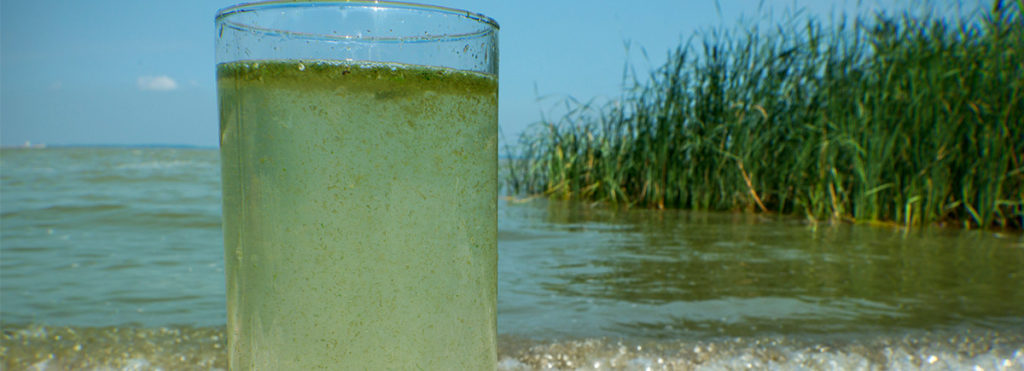
Today, August 2, 2017 marks the third anniversary of the Toledo, Ohio water crisis that left residents without safe drinking flowing from their taps for more than two days. Several weeks later, residents of Pelee Island, Ontario, faced a similar crisis lasting for nearly two weeks. In the summer of 2014, hundreds of thousands of people went without water due to a toxic algal bloom plaguing western Lake Erie. Parents could not bathe their children. Families could not drink their water.
Lake Erie – and every Great Lake – ought to be clean and safe for all people, not so polluted that it is a threat to public health and the regional economy. Yet this summer scientists have forecast another severe harmful algal bloom in western Lake Erie. So, we asked ourselves: Is enough being done to clean up Lake Erie?
Is enough being done to clean up Lake Erie?
Earlier today, we led a briefing on the status of Lake Erie clean up efforts, along with our partners at Freshwater Future, Michigan League of Conservation Voters, and Ohio Environmental Council.
Unfortunately, the news is not great.
Two years ago, the Great Lakes region applauded when the Governors of Ohio and Michigan joined with the Premier of Ontario to commit to reducing the amount of runoff pollution, specifically phosphorus, flowing into western Lake Erie by 40 percent. The commitment marked a promise to the people of Lake Erie – a promise of a lake nearly free of harmful algal blooms and a significant reduction in risk to people and the lake. The region’s leaders knew, as did the people around the region, that the goal was ambitious but unequivocally needed.
Unfortunately, progress has been painfully slow. Ohio, Michigan and Ontario are on the hook to create clear pollution reduction plans. Sadly the draft plans released so far have been unambitious, vague, and lacking enforcement requirements. Additionally, the jurisdictions have not provided the necessary resources to ensure implementation of the plans.
Three Priorities for a Clean Lake Erie
In an analysis released today, we identified three practices for Ohio, Michigan, and Ontario to implement in the next 12-24 months to kickstart progress toward fulfilling the promise of a clean Lake Erie:
- Completely ban manure and fertilizer spreading on frozen or saturated ground.
- Require comprehensive nutrient reduction plans by all farms in the Lake Erie basin that result in clean, not polluted, water coming off of farm fields.
- Improve water quality monitoring of the waterways flowing into Lake Erie.
We found that progress on these practices is mixed across jurisdictions. But our assessment is that none of the jurisdictions have developed strong policies in any of these priority areas. Read our fact sheet for information on how each jurisdiction is doing on each of these priority actions.
Holding Ohio, Michigan, and Ontario accountable to their promise of a clean Lake Erie
We have pledged to serve as watchdogs, along with our partners, to hold Ohio, Michigan and Ontario accountable to their promise of a clean Lake Erie. We will continue tracking and reporting regularly on progress on these and other actions across the region.
In October, we’ll release our full, in-depth assessment of practices in each jurisdiction. In the meantime, we’re calling on these jurisdictions to take immediate action on these three priorities.
We’ll be keeping a close eye on western Lake Erie’s harmful algal bloom as it unfolds this summer. We hope you’ll join us in holding Ohio, Michigan, and Ontario accountable by signing our petition. We will deliver it to the region’s leaders this Fall.
